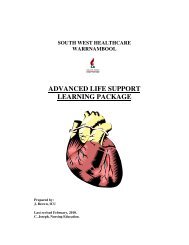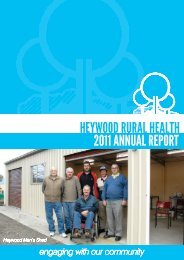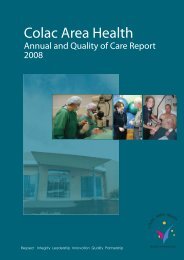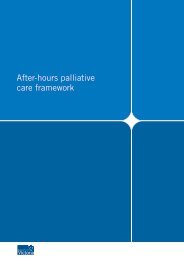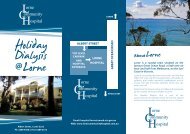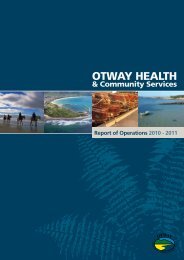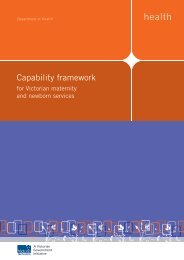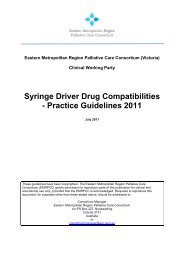Self Directed Learning Package - University of Queensland
Self Directed Learning Package - University of Queensland
Self Directed Learning Package - University of Queensland
- No tags were found...
You also want an ePaper? Increase the reach of your titles
YUMPU automatically turns print PDFs into web optimized ePapers that Google loves.
82 • The Palliative Approach ToolkitIncident Pain• pain results from a specific event e.g. wound dressing,movement• requires analgesia PRIOR to the event that causes the pain.Key PointRemember to allow time for analgesia to workbefore undertaking the intervention.Breakthrough Pain• pain occurs between regular scheduled doses <strong>of</strong> analgesia• common in cancer pain• response should be to give an additional prescribedbreakthrough dose <strong>of</strong> analgesia• review/ reassess pain and treatment regime if doses areneeded repeatedly.PathophysiologyPain can also be classified according to its physiological causes.• Nociceptive pain occurs because <strong>of</strong> stimulation <strong>of</strong> nerves inthe skin and deep tissues called ‘nociceptors’.• Neuropathic pain is caused by the damage to the actualnerves themselves.Classification <strong>of</strong> pain 2,18Type Characteristics Descriptors ExamplesNociceptive - Somatic Well localised Gnawing, aching,throbbing, sharpSuperficial: pressuresoresDeep: bone fractureNociceptive - VisceralPoorly localised,sometimes referredDeep, squeezing,penetrating, pressureIntestinal or biliary colicNeuropathicCan follow dermatome/nerve distributionBurning, shooting,radiating, tingling,numbness, pins andneedles, deep achingPost herpetic neuralgia(shingles), spinal cordcompression



